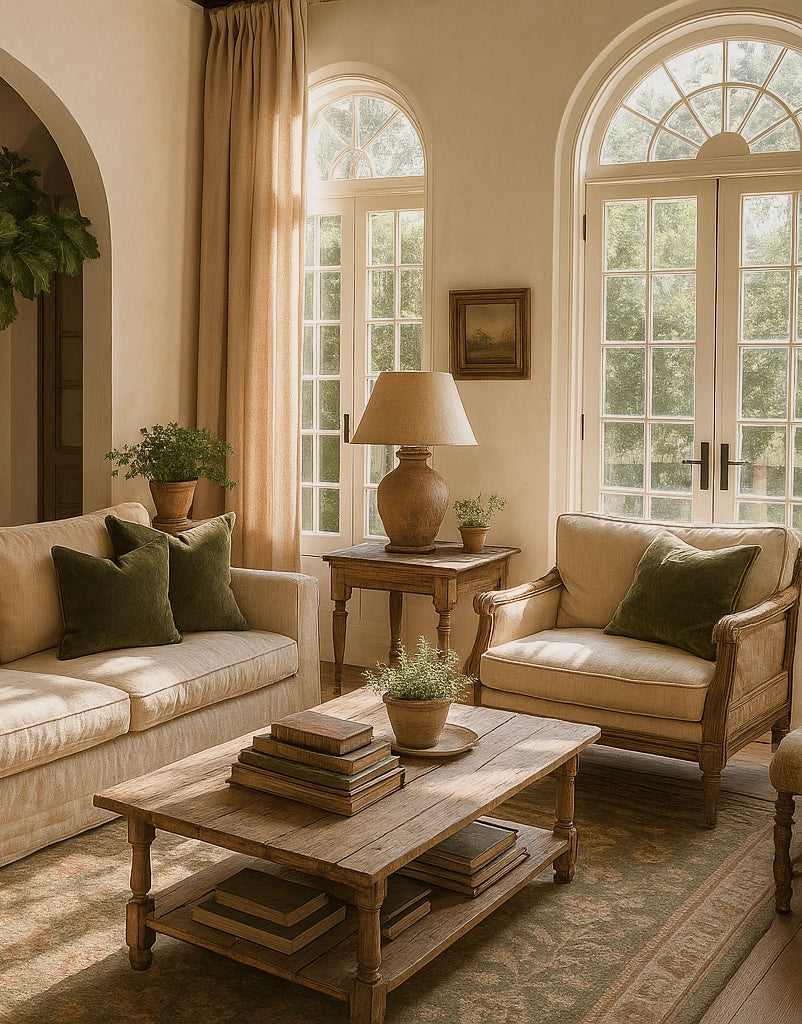
Style and Rise
“Old Money” Style & the Rise of the Nancy Meyers Look: Why Vintage is the Secret Ingredient
There’s a quiet revolution happening in interiors right now — a shift away from the fast, fleeting trends of modern minimalism and toward something richer, more storied, and effortlessly timeless. Enter the “old money” look. Think grand but lived-in spaces, timeworn elegance, and a sense that every piece has history. And at the heart of it all? A growing love for vintage and antique finds.
The “Nancy Meyers” Effect
We can’t talk about this trend without paying homage to the queen of cinematic interiors: Nancy Meyers. From Something’s Gotta Give to It’s Complicated, her films have long served as design daydreams — sun-drenched kitchens, plush sofas, warm lighting, and rooms that feel both luxurious and deeply comforting. Lately, her aesthetic is being rediscovered and relabeled as the ultimate “quiet luxury” — homes that look inherited rather than decorated.
It’s this lived-in warmth — layered textiles, classic furniture, art that doesn’t match but belongs — that feels especially relevant today.
What is “Old Money” Style, Really?
Forget the flashy logos and hyper-modern furniture. The “old money” look is all about restraint, patina, and provenance. It leans into:
-
Natural materials like linen, wood, stone, and brass
-
Quality over quantity – fewer pieces, but better made
-
Timeless silhouettes – English roll-arm sofas, skirted tables, well-worn leather chairs
-
Art and objects with soul – a framed sketch, an old bust, a handmade rug
This aesthetic suggests history and inheritance — not necessarily wealth, but a cultivated eye. And it’s no surprise that the most effortless way to achieve this layered, elegant feel is by buying vintage and antique.
Why Vintage and Antiques Are the Key
-
They Add Instant Character
Unlike new mass-produced furniture, vintage and antique pieces bring charm, quirks, and a story. A 19th-century cabinet or a chippy Gustavian chest immediately grounds a space and gives it that coveted “collected over time” feeling. -
They’re Timeless by Design
The best vintage pieces were made to last — in both style and structure. A Louis XVI mirror or a scalloped-edge bowl doesn’t age out of fashion because it never relied on it to begin with. -
They Bring the “Undecorated” Look
One of the signatures of the Nancy Meyers home is that it feels real — nothing matches too perfectly, and yet it all sings together. Mixing vintage with modern — a worn wooden table with clean white walls, an antique lamp on a crisp console — creates that layered, nonchalant elegance. -
It’s Sustainable and Thoughtful
There’s something deeply satisfying about giving a second life to an old piece. Choosing vintage means choosing craftsmanship, sustainability, and individuality over mass-made convenience.
How to Shop the Look
Start small if you're new to vintage — a gilded frame, a weathered stool, a stack of old books. Let the layers build naturally. The beauty of this aesthetic is that it isn’t about perfection; it’s about patina, provenance, and personal taste.
Look for:
-
Time-softened woods
-
Elegant shapes — not just ornate but refined
-
Muted palettes — earthy tones, creams, soft blues and greens
-
Mix of materials — glass, ceramic, linen, metal
-
Pieces that feel like they’ve always been there
In Summary
The “old money” / Nancy Meyers revival is not just a style — it’s a mood. It’s about embracing imperfection, valuing age, and creating spaces that whisper rather than shout. And the easiest, most authentic way to achieve it? Buy vintage. Buy antique. Buy with feeling.
After all, the best homes aren’t designed in a day — they’re gathered gently, piece by piece.